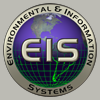
|
Thomas Curtin Research Scientist/Engineer - Senior Principal & Washington, DC Representative tcurtin@apl.washington.edu Phone 703-969-2938 |
Education
B.S. Physics, Boston College, 1967
M.S. Physical Oceanography, Oregon State University, 1969
Ph.D. Physical Oceanography, University of Miami, 1979
M.B.A. Business Administration, Massachusetts Institute of Technology, 2003
|
Publications |
2000-present and while at APL-UW |
FlowPilot: Shoreside autonomy for profiling floats Szuts, Z., T. Harrison, T. Curtin, B. Kirby, and B. Ma, "FlowPilot: Shoreside autonomy for profiling floats," Proc., OCEANS, 25-28 September, Biloxi, MS, doi:10.23919/OCEANS52994.2023.10337384 (MTS/IEEE, 2023). |
More Info |
11 Dec 2023 |
|||||||
|
Over the last twenty years, profiling floats have revolutionized ocean observations with globally distributed Lagrangian arrays performing fixed vertical sampling cycles. Here we investigate adaptive sampling with an array of inter-dependent floats guided by a software package called FlowPilot, which uses all available float measurements to select park depths that provide favorable drifts based on sampling goals. Drift predictions are performed with multiple prediction methods, including methods that use float data (drift velocity, geostrophic velocity calculations) or from external sources like numerical ocean forecast models. A skill-based weight is assigned to each method based on how accurately it predicts recent drifts. With this generalized approach to prediction, disparate methods can be combined numerically to permit multi-method optimization. The emergent skill of FlowPilot is tested and quantified by numerical simulations that minimize dispersion by keeping a grid of floats close to the center of the deployment box. |
|||||||||
Guest editorial pushing for higher autonomy and cooperative behaviors in maritime robotics Djapic, V., T.B. Curtin, W.J. Kirkwood, J.R. Potter, and N.A. Cruz, "Guest editorial pushing for higher autonomy and cooperative behaviors in maritime robotics," IEEE J. Ocean. Eng., 44, 286-289, doi:, 2019 |
More Info |
15 Apr 2019 |
|||||||
|
The papers in this special section examine the technology of maritime robotics. These papers are the result of a collaborative effort between the IEEE Oceanic Engineering Society, the U.S. Office of Naval Research (ONR), and RoboNation, a nonprofit robotics organization formerly known as AUVSI foundation. The field of maritime robotics is swiftly moving toward integration of air, surface, and subsurface autonomous systems. For example, where autonomous maritime systems (AMS) are composed of heterogeneous assets, surface vehicles are now often capable of transporting aerial and underwater vehicles, leveraging the benefits of each to increase mission endurance and capabilities. In seeking to integrate land, sea, and air vehicle systems, it is natural to look toward leveraging advances made separately in each domain. For example, substantial similarities exist between the desired behavioral capabilities of autonomous land vehicles and those of autonomous marine systems. Recent advances in the field of driverless cars may therefore be applicable to autonomous surface vessels, underwater vehicles, and even aerial vehicles. |
|||||||||






